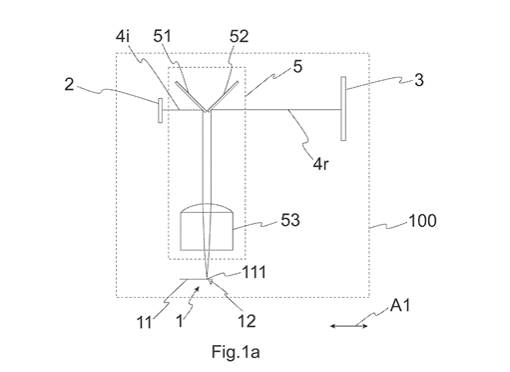Tuesday, 17 November 2020
Nanosurf AG, a global nanotechnology company that focuses on developing scanning probe microscopes and other related technologies, was awarded US Patent 10,564,181 by the United States Patent and Trademark Office for a novel optical guiding mechanism for tip-scanning atomic force microscopes (AFM).
Nanosurf’s Chief Technology Officer, Dominik Ziegler, stated that “this invention enables Nanosurf to develop fully motorized tip-scanning AFMs. Automating optical lever alignment will increase the ease of use and pave the way towards one-click AFM systems”.
The core of every atomic force microscope is a probe, which is a microscopic cantilever beam with a sharp tip at the free end, and a translation system for scanning the probe over a surface. Changes in the cantilever deflection, as the sharp tip interacts with the surface, are used to reveal information about the sample surface. The cantilever deflections are measured optically, by measuring position changes in light that is focused onto and reflected from the cantilever. Tip-scanning AFMs, where the probe is moved and the sample remains stationary, are especially flexible with regards to the size and mass of the sample. However, a major challenge for tip-scanning AFMs is that the light paths for optical detection are required to follow the moving tip and detect subatomic motions without inducing detection artifacts. The novel optical guiding mechanism invented at Nanosurf enables the light path to follow the tip motion while the light source, photodetector and all adjustment mechanics remain stationary. The resulting design has the advantage of reducing the mass required to be scanned, thereby increasing the speed and performance of the AFM. The optical guiding mechanism is comprised of two optical deflection elements per translational axis that move synchronously with the probe. It is configured to define an optical path between the light source and the detector in such a manner that the optical path length is independent of the translation of the probe along the respective translational axis.
“This optical guiding architecture allows us to effectively separate the optical detector mechanics from the scanner mechanics. We can then optimize the design of each component individually, and make a scanner with low moving mass, which means faster imaging, along with optical detector mechanics that are fully-motorized” added Jonathan Adams, the inventor of this optical guiding mechanism.



